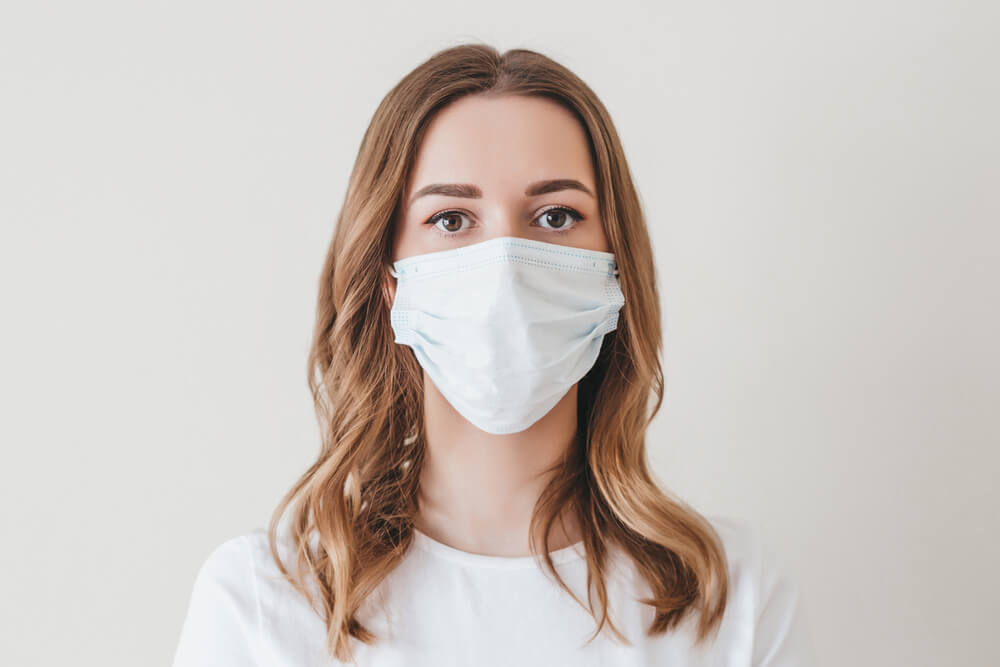In the United States created a face mask capable of detecting COVID-19
'01.07.2021'
Nurgul Sultanova-Chetin
A face mask capable of detecting coronavirus has been created in the United States. Its sensor technology can also be used to create clothing that can detect a variety of pathogens and other threats. ScitechDaily.

Engineers at MIT and Harvard University have developed a new face mask that can diagnose COVID-19 in its wearer in about 90 minutes. The masks have tiny sensors built into them that can be adapted to detect other viruses if needed.
The sensors are based on a lyophilized cell system that the research team previously developed for use in paper-based diagnostic devices for Ebola and Zika viruses. Sensors can be embedded not only in face masks, but also in clothing, for example, in lab coats, which could potentially become the basis for creating a new way to monitor the exposure of medical workers to various pathogens or other threats.
“We have demonstrated that we can sublimate a wide range of synthetic biological sensors to detect viral or bacterial nucleic acids, as well as toxic chemicals, including nerve agents. We anticipate that this platform will enable the next generation of portable biosensors to be used by first responders, medical and military personnel, ”said James Collins, MIT professor of biomedical engineering and science and senior author of the study.
On the subject: COVID-19 May Cause Diabetes: What Is So Far known
The sensors in the face masks are designed in such a way that they can be activated by the user when he is ready to perform a coronavirus test. The verification results are displayed only on the inside of the mask to ensure privacy.
Portable sensors
The new handheld sensors and diagnostic face mask are based on technology that Collins began developing several years ago. In 2014, he showed that proteins and nucleic acids needed to create synthetic gene networks that respond to specific target molecules can be embedded in paper, and used this approach to create paper-based diagnostics for Ebola and Zika viruses. Collins collaborated with Feng Zhang's lab in 2017 to develop another cell-free sensory system known as SHERLOCK, which is based on CRISPR enzymes and allows highly sensitive detection of nucleic acids from viruses or pathogens.
These cell-free components of the regimen are lyophilized and remain stable for many months before rehydration. When activated by water, they are able to interact with their target molecule, which can be any RNA or DNA sequence, as well as other types of molecules, and signal the detection of this target molecule through a color change.
More recently, Collins and his colleagues have begun working on incorporating these sensors into textiles to create a lab coat for healthcare workers or others potentially exposed to pathogens.

First, they analyzed hundreds of different types of fabric (from cotton and polyester to wool and silk) to find out which ones are compatible with this type of sensor. As a result, it turned out that the combination of polyester with other synthetic fibers is best suited for these purposes.
The researchers then embedded the sensors into the lyophilized components in a small patch of this synthetic tissue, where they were surrounded by a ring of silicone elastomer. This separation prevents moisture from evaporating or spreading the sample outside the sensor. Sensors can be designed to generate various types of signals, including a color change that can be seen with the naked eye, or a fluorescent or luminescent signal that can be read with a handheld spectrometer.
Diagnostic face mask
When the researchers finished their work on handheld sensors in early 2020, COVID-19 began to spread around the world, so they immediately decided to try using their technology to diagnose the SARS-CoV-2 virus.
On the subject: There is a health risk, but this is not the main thing: what does an immunologist think about vaccinations against COVID-19
To make a diagnostic face mask, the researchers embedded SHERLOCK lyophilized sensors into a paper mask. The sensors can detect viral particles in the breath of a person wearing a mask.
The mask also includes a small reservoir of water that is released at the push of a button when the user is ready to perform a test. This moisturizes the lyophilized components of the SARS-CoV-2 sensor, which processes and analyzes the accumulated droplets from the mouth inside the mask and gives a result within 90 minutes.
This test is as sensitive as the gold standard, highly sensitive PCR tests, but it is as fast as antibody tests, which are used to quickly test for COVID-19.
The prototypes developed in this study have sensors on the inside of the mask to determine the status of the wearer, as well as sensors placed on the outside of the garment to detect environmental influences. Researchers could replace masked sensors to detect other pathogens, including influenza, Ebola and Zika, or to detect organophosphate nerve agents.
The researchers have applied for a patent on this technology, and now they look forward to working with a company to further develop the sensors. According to Collins, the face mask is likely the first device with this technology that may become available, but it is too early to talk about the timing.







